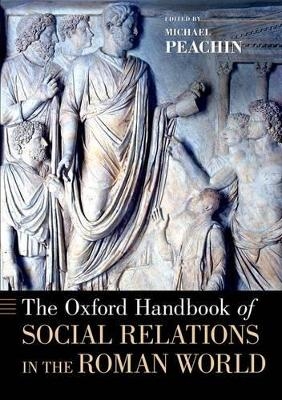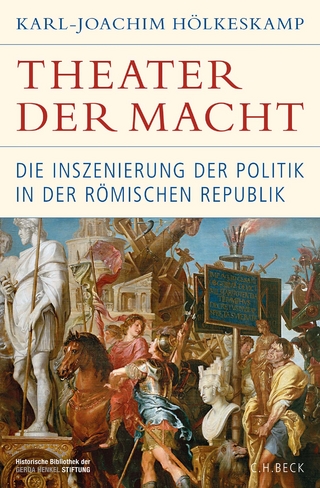
The Oxford Handbook of Social Relations in the Roman World
Seiten
2014
Oxford University Press Inc (Verlag)
978-0-19-937600-1 (ISBN)
Oxford University Press Inc (Verlag)
978-0-19-937600-1 (ISBN)
The study of Roman society and social relations has blossomed in the past thirty years. The purpose of this handbook is twofold. On the one hand, it synthesizes what has heretofore been accomplished in this field. On the other hand, it attempts to configure the examination of Roman social relations in some new ways, and thereby indicates directions in which the discipline might now proceed.
The study of Roman society and social relations blossomed in the 1970s. By now, we possess a very large literature on the individuals and groups that constituted the Roman community, and the various ways in which members of that community interacted. There simply is, however, no overview that takes into account the multifarious progress that has been made in the past thirty-odd years. The purpose of this handbook is twofold. On the one hand, it synthesizes what has heretofore been accomplished in this field. On the other hand, it attempts to configure the examination of Roman social relations in some new ways, and thereby indicates directions in which the discipline might now proceed.
The book opens with a substantial general introduction that portrays the current state of the field, indicates some avenues for further study, and provides the background necessary for the following chapters. It lays out what is now known about the historical development of Roman society and the essential structures of that community. In a second introductory article, Clifford Ando explains the chronological parameters of the handbook. The main body of the book is divided into the following six sections: 1) Mechanisms of Socialization (primary education, rhetorical education, family, law), 2) Mechanisms of Communication and Interaction, 3) Communal Contexts for Social Interaction, 4) Modes of Interpersonal Relations (friendship, patronage, hospitality, dining, funerals, benefactions, honor), 5) Societies Within the Roman Community (collegia, cults, Judaism, Christianity, the army), and 6) Marginalized Persons (slaves, women, children, prostitutes, actors and gladiators, bandits). The result is a unique, up-to-date, and comprehensive survey of ancient Roman society.
The study of Roman society and social relations blossomed in the 1970s. By now, we possess a very large literature on the individuals and groups that constituted the Roman community, and the various ways in which members of that community interacted. There simply is, however, no overview that takes into account the multifarious progress that has been made in the past thirty-odd years. The purpose of this handbook is twofold. On the one hand, it synthesizes what has heretofore been accomplished in this field. On the other hand, it attempts to configure the examination of Roman social relations in some new ways, and thereby indicates directions in which the discipline might now proceed.
The book opens with a substantial general introduction that portrays the current state of the field, indicates some avenues for further study, and provides the background necessary for the following chapters. It lays out what is now known about the historical development of Roman society and the essential structures of that community. In a second introductory article, Clifford Ando explains the chronological parameters of the handbook. The main body of the book is divided into the following six sections: 1) Mechanisms of Socialization (primary education, rhetorical education, family, law), 2) Mechanisms of Communication and Interaction, 3) Communal Contexts for Social Interaction, 4) Modes of Interpersonal Relations (friendship, patronage, hospitality, dining, funerals, benefactions, honor), 5) Societies Within the Roman Community (collegia, cults, Judaism, Christianity, the army), and 6) Marginalized Persons (slaves, women, children, prostitutes, actors and gladiators, bandits). The result is a unique, up-to-date, and comprehensive survey of ancient Roman society.
Michael Peachin is Professor of Classics, New York University
BABLITZ);
| Erscheint lt. Verlag | 14.8.2014 |
|---|---|
| Reihe/Serie | Oxford Handbooks |
| Zusatzinfo | 34 illus. |
| Verlagsort | New York |
| Sprache | englisch |
| Maße | 168 x 241 mm |
| Gewicht | 1406 g |
| Themenwelt | Geschichte ► Allgemeine Geschichte ► Altertum / Antike |
| Geschichte ► Teilgebiete der Geschichte ► Kulturgeschichte | |
| Geschichte ► Teilgebiete der Geschichte ► Sozialgeschichte | |
| Geisteswissenschaften ► Philosophie ► Philosophie Altertum / Antike | |
| Sozialwissenschaften ► Soziologie | |
| ISBN-10 | 0-19-937600-X / 019937600X |
| ISBN-13 | 978-0-19-937600-1 / 9780199376001 |
| Zustand | Neuware |
| Haben Sie eine Frage zum Produkt? |
Mehr entdecken
aus dem Bereich
aus dem Bereich
Die unglaubliche Geschichte eines antiken Söldnerheeres
Buch | Hardcover (2022)
C.H.Beck (Verlag)
CHF 39,20
die Inszenierung der Politik in der römischen Republik
Buch | Hardcover (2023)
C.H.Beck (Verlag)
CHF 67,20


